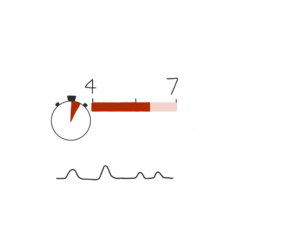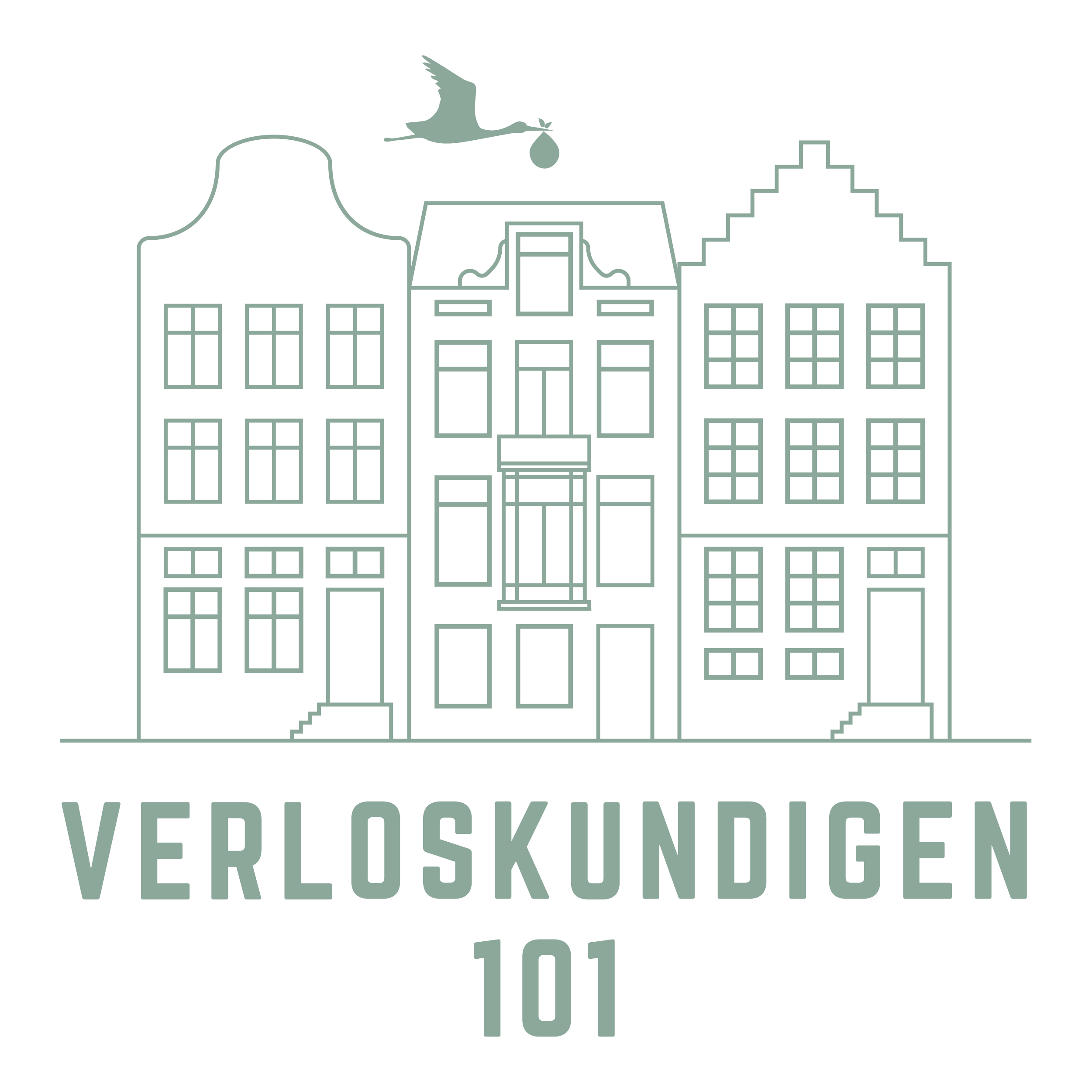Phases of birth
- Latent phase: softening and flattening of the cervix and dilation until 1-3cm
- Active (dilation) phase: dilation of the cervix until fully dilated –> 10cm
- Pushing phase: the birth of the baby
- Afterbirth: the placenta will be born
Hormones during labour
The most important hormones during labour are oxytocine, endorfin and adrenalin. The hormone responsible for making contractions is oxytocin. Endorfines are the bodies own morfin that your body will start producing as the first contraction starts. Endorfines help to reduce the pain caused by the contractions which helps you to relax better and increases your oxytocin level to make stronger and more effective contractions.
Adrenalin rises in your body when you’re anxious or tensed and reduces the amount of oxytocin in your body. That’s why it’s so important to feel confident and relaxed towards labour.
What is a contraction?
Contractions move in a wave-like motion from the top of the uterus to the bottom. Some women describe contractions as strong menstrual cramps. Your abdomen becomes hard and tensed. Between contractions the uterus relaxes again and the abdomen becomes soft. The way a contraction feels is different for each woman, and may feel different from one pregnancy to the next. But early labour contractions usually already cause discomfort or a dull ache in your back and lower abdomen, along with pressure in the pelvis.
Latente fase
Early labour may feel like a backache, ache in your lower abdomen, cramps, or low-intensity contractions. Most women describe it as an extreme version of menstrual cramps. Contractions occur just like waves do, just before the wave breaks, the pain is most fierce and afterwards it gets less. Between contractions there is no pain. The stronger, more frequent and regular the contraction gets, the more labour progresses.
Contractions
During the first stage of labour, the cervix starts to soften so it can open. This is usually the longest stage of labour and is called the latent phase. During this phase you will feel irregular contractions every 5 – 7 mins apart and lasting 30-50s (see picture below). Also the intensity of the contractions will vary. It can take many hours, or even days, before you’re in established labour. Established labour is when your cervix has dilated to more than 4cm and regular contractions are opening up the cervix.
Breathing exersizes
Breathing exercises, massage and taking a warm bath or shower may help ease the pain during this early stage of labour. Staying at home in early labour gives you a better chance of having a shorter and more positive experience of active labour. You’re less likely to need medical interventions in the form of drugs to speed up your labour, or to help you give birth. This makes sense when you realise that it’s much easier to rest and relax in your own home. You’ll be able to save your energy for the hard work that’s about to come.
In the latent phase you don’t have to inform us labour has started. Use your energy to cope with the contractions, try to doze away between contractions or have a warm shower/bath to ease the pain.

Active (dilation) phase
The main sign that you’re moving into active (established) labour is experiencing painful, regular contractions. These gradually become more frequent, longer, and stronger in intensity. Contractions during established labour are regular and tend to occur every 3 to 4 minutes with a duration of 1 to 1,5mins. Some women experience the pain mostly in their lower abdomen, where other feel it in their back or even legs. While you’re in active labour, listen to your body and pay attention to how you’re feeling. As your labour progresses, you may start to turn your awareness inward, focusing in on each contraction and using your breath to help you to cope. Changing position during active labour is also advised to help to progress labour. Furthermore we encourage to urinate frequently (every 2 hours) as a full bladder can slow down labour and to keep yourself hydrated. Usually most women are not that hungry during labour, so just a snack once in a while is enough to keep yourself going.
Stronger contractions
As the dilation progresses, contractions will be stronger and more frequent. At the end of the active phase, when the cervix has dilated between 8 and 10 cm, the contractions will be at their peak of intensity, but there will always be a (little) break between contractions to regain your energy. During active labour we will monitor the dilation with internal exams every few hours and whenever necessary. When you are about 5 – 6cm dilated, and you prefer to give at the hospital or birthing centre, this is the time to go. You can go with your own car and we will drive right behind you, or take a taxi/Uber. From of that moment on we will stay with you and give one to one care.
How to deal with contractions?
Listen to your body what it needs to be able to cope with the contractions. You will notice that you are less aware of your surroundings and that you turn more into yourself. Use your breath to breath away the pain. This allows you to relax even better and produce more oxytocin, which ensures effective contractions. Taking different positions (lying, sitting, standing, squatting etc.) during the dilation phase can make it go faster. We also advise you to urinate regularly as a full bladder can slow down dilation.
Try to relax in between contractions
During the breaks between contractions, try to relax and recharge your body for the next contraction. The membranes usually only break after a while during labour. If the membranes have not yet spontaneously ruptured, we suggest to break them towards the end of dilation or sometimes sooner if necessary. Of course, we always do this after your consent (for example, if the contractions slow down or dilation is prolonged). We will perform an internal examination approximately every 2 – 3 hours to assess the progress of the dilation if necessary. If you have 5-7cm dilation and want to give birth in hospital or birthing center, now is the time to go there. We drive in two cars one after the other to the hospital (if you do not have your own car, you can call a taxi/uber). From this moment on we will continue to guide you one to one.
Contractions during the active/dilation phase
Regular contractions every 3 – 4 mins lasting 60 – 90s dilating the cervix until 10 cm (fully dilation):


Pushing phase
Once your cervix is fully dilated, you’ll begin to feel increasingly powerful contractions, along with an overwhelming urge to bear down. It’s best to wait until you feel this urge before you start actively pushing, as pushing before this is likely to achieve little besides exhausting you.
Getting into an upright position can help you to push for a shorter time, as gravity, and having an open pelvis, will help your baby to descend.
The pelvis is not a rigid, fixed structure, but an elastic system of bones that can widen and stretch, which is very flexible at the joints so that it can open wide during labour. The baby’s head will have to make an internal rotation and an external rotation due to the shape of the cavity of the pelvis (shown in the picture below).


Birth of your baby
With each contraction, you’ll probably have three irresistible urges to bear down that last about seven to ten seconds each. Listen to your body, and push in response to the urges, relaxing your pelvic floor as you push so that the muscles can stretch around your baby. With every pushing contraction, your baby will move through your pelvis little by little, but by the end of the contraction, he’ll probably slip back slightly. Don’t despair. This is normal and gives the muscles of your pelvic floor time to stretch gradually. As long as your baby keeps gradually moving down, you’re doing fine. When your baby’s head is far down in your pelvis, you’ll probably feel a hot, stinging sensation. This will happen as the opening of your vagina starts to stretch around your baby’s head. This is called crowning.
We will guide you through every contraction and help you to find the best position to give birth. You may want to sit, lie on your side, stand, kneel, or squat, whatever feels best for you. If you’ve had lots of backache while in labour, kneeling on all fours may help. The last two or three contractions we will ask you to stop pushing and to take short, panting breaths or sighs instead. This helps you to resist the urge to bear down, so that your baby is born gently and slowly and prevents unnecessary tearing. This stage of labour is hard work but we will guide you all the way through.
And finally, after all those hours in hard work, your baby will lie on your chest!
Afterbirth
After your baby is born, you may have a few minutes to rest and enjoy your baby before mild contractions start again. These contractions will be noticeable but weaker when they begin again, as your womb (uterus) contracts down. You may only feel a couple of contractions before you deliver the placenta. The placenta, with the membranes attached, will peel away from the wall and drop to the bottom of your womb, and then into your vagina.
Sometimes, if the placenta is still attached to the uterine, we will give you an injection with oxytocin to help the uterus contract. Using the injection results in less bleeding immediately after the birth. Once the placenta is delivered, we will examine the placenta and membranes, to make sure that nothing has been left behind inside your womb. We will also feel your stomach to ensure that your womb is contracting down. This stops the bleeding from the place where the placenta was attached and starts the process of your womb shrinking back down now that your baby has been born.
The umbilical cord is traditionally cut by your birth partner, however it’s up to you to decide what your wishes are. You will be asked if you want to keep the placenta. If not, it will be thrown away together with other medical waste (when you had a hospital birth) or in case of a home birth it needs to be thrown away in an underground waste container.
